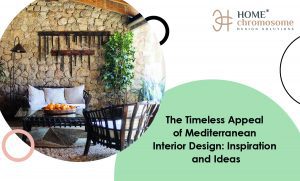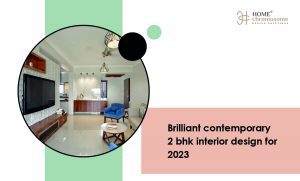Contemporary interior design: Historic spaces carry a unique charm, an essence of bygone eras that whispers stories of the past. Preserving these spaces while infusing them with modern functionality and aesthetics can be a challenging yet rewarding endeavor. The juxtaposition of old and new can create a captivating design that pays homage to history while embracing the present. In this blog, we’ll explore detailed ideas on how to blend contemporary interior design with historic spaces.

Contemporary interior design ideas
Contemporary interior design #1 – Respectful Restoration
Before embarking on a journey of blending old and new, it’s essential to conduct a thorough assessment of the historic space. Begin by delving into the history of the building, understanding its original purpose, architectural style, and unique features. This research will serve as the guiding light throughout the restoration and design process. Collaborate with preservation experts, architects, and craftsmen who specialize in historical restoration. Their expertise will ensure that any repairs or restorations are executed with meticulous attention to detail, staying faithful to the space’s original design intent.
Contemporary interior design #2 – Contrast with Materials
One of the most effective ways to harmonize old and new design elements is through the deliberate contrast of materials. For instance, consider juxtaposing the aged texture of brick walls with sleek glass panels. This interplay of materials doesn’t merely highlight the beauty of both eras but also creates a visual conversation that captures attention. Think about incorporating elements like ornate wooden ceilings alongside minimalist steel beams, demonstrating the evolution of design while celebrating the past.
Contemporary interior design #3 – Open Floor Plans
Historic spaces often come with compartmentalized layouts that were suited to their original functions. Opening up the floor plan requires careful consideration of structural integrity. Collaborate with architects and engineers to determine which walls can be safely removed or modified while maintaining the space’s stability. The goal is to create a sense of spaciousness that allows contemporary furnishings and decor to coexist seamlessly with the existing architecture. Thoughtful rearrangement of spaces can offer modern comfort while preserving the unique character of the building.
Contemporary interior design #4 – Modern Furnishings with a Nostalgic Twist
To create a bridge between old and new, introduce modern furnishings with a touch of nostalgia. Opt for contemporary sofas and chairs upholstered in rich, vintage fabrics that evoke the historic era. Combine these with sleek coffee tables and accents that feature antique-inspired patterns or details. This approach strikes a balance between modern functionality and a subtle nod to the past, resulting in a design that feels both fresh and familiar.
Contemporary interior design #5 – Statement Lighting
Lighting serves as a powerful bridge between different design eras. Choose modern lighting fixtures that stand out against the backdrop of traditional architecture. For instance, a dazzling chandelier suspended from a centuries-old ceiling can become a mesmerizing focal point, capturing the essence of timelessness while embracing modern aesthetics. The interplay between light and architecture can highlight the unique features of the space in a new, dynamic way.
Contemporary interior design #6 – Artful Artifacts Display
Enrich the space’s narrative by thoughtfully displaying artifacts, vintage photographs, or historical documents that reflect its history. Create a seamless integration by placing these items on contemporary shelving or display units. The juxtaposition of these artifacts against modern elements not only showcases the past but also invites viewers to explore the layers of history that have shaped the space.
Contemporary interior design #7 – Subtle Color Palettes
Choosing the right color palette is crucial for harmonizing old and new elements. Research the color schemes prevalent during the historical era of space. Adapt those hues to modern sensibilities, using them as a base for wall colors, textiles, and decor. The use of subtle shades, such as muted pastels or warm neutrals, ensures that the space maintains a cohesive backdrop that accommodates both traditional and contemporary interior design elements.
Contemporary interior design #8 – Minimalistic Approach
Embracing a minimalistic approach allows the architectural details of historic spaces to shine while integrating modern elements. Select furniture with clean lines and understated forms, ensuring that they complement rather than compete with the space’s original features. The emphasis on negative space creates a sense of openness, allowing visitors to appreciate the historical elements without distraction.
Contemporary interior design #9 – Adaptive Technology Integration
Modern technology can enhance the functionality of a historic space when integrated thoughtfully. Conceal wiring and outlets within moldings or discreet locations to maintain the historical aesthetic. Invest in smart home systems that seamlessly blend with the space, providing modern convenience while respecting its visual integrity. Hidden speakers, discreetly placed outlets, and smart lighting systems offer contemporary comfort without compromising the timeless beauty of the space.
Contemporary interior design #10 – Seamless Transitions
The transitions between old and new elements are vital for creating a harmonious design. Architectural details, such as moldings, trims, and archways, play a pivotal role in achieving this harmony. Use these elements strategically to create graceful transitions that eliminate any jarring contrasts. By repeating design motifs, materials, or colors throughout the space, you establish a cohesive narrative where different design eras interweave effortlessly.
Contemporary interior design #11 – Architectural Salvage Integration
To truly connect the contemporary with the historic, consider incorporating salvaged architectural elements from the same era as the space. Reclaimed doors, windows, and decorative details hold the charm of the past and can be repurposed in innovative ways. For example, an antique window frame could become a stunning room divider, or a reclaimed door could be transformed into a unique tabletop. This integration not only adds an authentic touch but also tells a story of continuity, showcasing the evolution of the space over time.
Contemporary interior design #12 – Wall Treatments
Wall treatments offer a canvas for blending old and new through creative design. Explore the idea of using modern wallpapers with subtle historical patterns, giving walls a contemporary twist while nodding to the past. Additionally, consider accent walls adorned with reclaimed wood panels. These panels infuse a space with warmth and texture, serving as a bridge between classic architecture and modern design aesthetics.
Contemporary interior design #13 – Eclectic Decor Pairing
Creating an eclectic mix of decor items is a wonderful way to highlight both historical and contemporary aspects. Pair vintage artwork, sculptures, or artifacts with sleek, modern pieces. The contrast between the two styles not only showcases the unique character of both eras but also allows you to express your personal style within the space. This approach encourages conversation and exploration, as each element tells its own story.
Contemporary interior design #14 – Repurposed Furniture
Give antique furniture a fresh lease on life by repurposing it for modern use. Consider transforming a vintage dresser into a stylish bathroom vanity by retrofitting it with modern sinks and plumbing. This repurposing not only showcases your creativity but also respects the history of the piece while adapting it to fulfill contemporary needs. It’s a beautiful blend of form and function.
Contemporary interior design #15 – Hidden Modern Amenities
Incorporating modern amenities discreetly preserves the historical aesthetic while enhancing comfort. For example, install underfloor heating beneath original historical flooring materials. This modern touch ensures warmth without visible radiators or vents, maintaining the visual integrity of the space. Additionally, consider integrating hidden speakers within walls, seamlessly merging modern technology with timeless architecture and providing a subtle layer of contemporary convenience.
To Conclude…
Blending contemporary interior design with historic spaces is an art that requires a delicate balance between preservation and innovation. By respecting the past, embracing the present, and envisioning the future, it’s possible to create a harmonious design that tells a captivating story of time’s passage. With careful planning and thoughtful execution, the result can be a space that pays homage to history while embracing the beauty of modernity.







